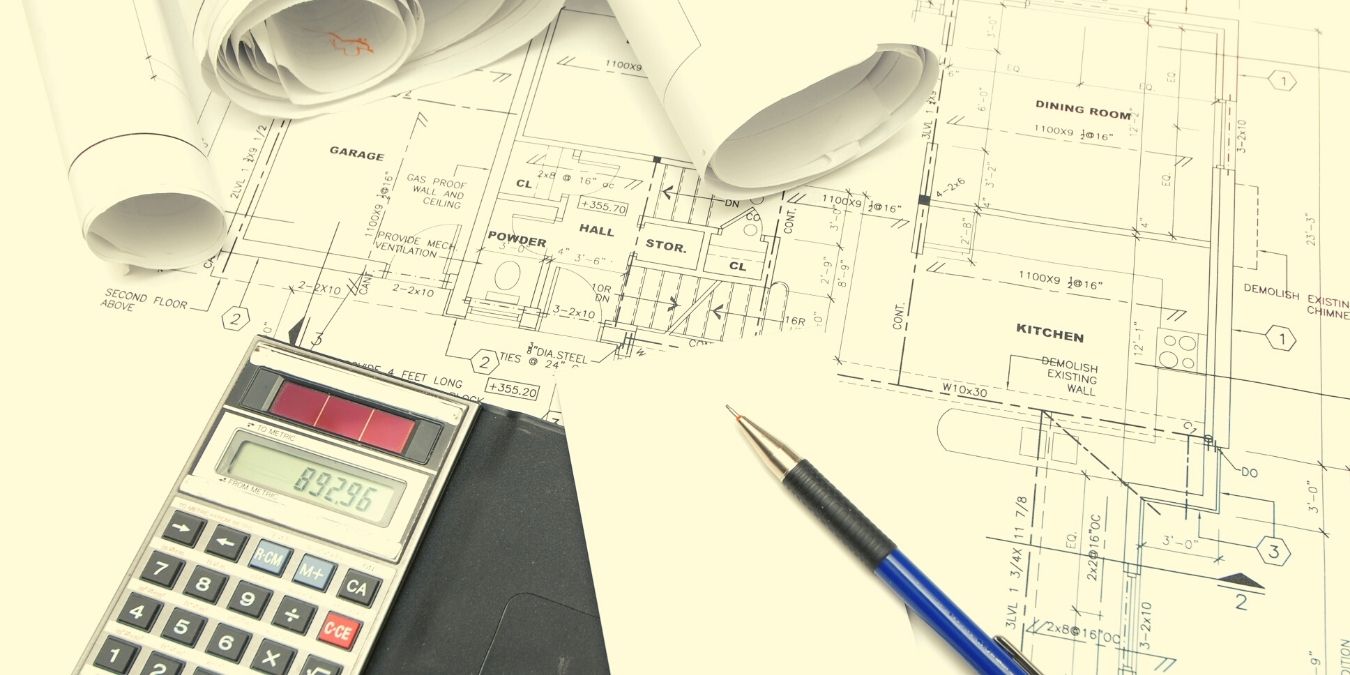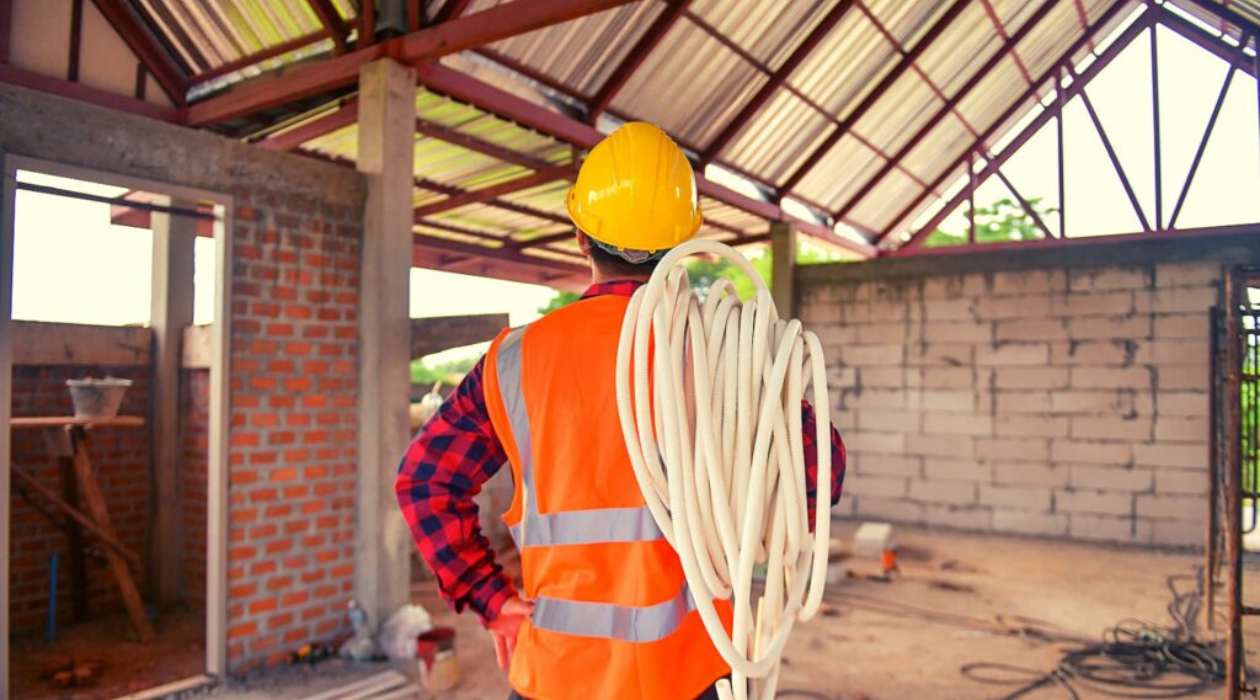Home>diy>Building & Construction>What Is Estimating In Construction


Building & Construction
What Is Estimating In Construction
Modified: August 17, 2024
Learn about the process of estimating in building construction, including cost analysis and budget planning. Discover how accurate estimations play a crucial role in successful construction projects.
(Many of the links in this article redirect to a specific reviewed product. Your purchase of these products through affiliate links helps to generate commission for Storables.com, at no extra cost. Learn more)
Introduction
Building construction is a complex and intricate process that requires meticulous planning and precise execution. One crucial aspect of this process is estimating, which plays a pivotal role in determining the viability and success of a construction project. Estimating in construction involves analyzing and calculating the costs, materials, and labor required for a project, providing stakeholders with a comprehensive understanding of the financial and logistical aspects of the venture.
Accurate estimation is essential for construction companies to make informed decisions, secure funding, and ensure profitability. It enables them to develop realistic budgets, establish competitive bids, and effectively manage resources throughout the project lifecycle.
In this article, we will delve into the world of estimating in construction, exploring its definition, importance, process, types, and the tools and techniques involved. We will also shed light on the common challenges faced in construction estimating and the benefits of accurate estimation in ensuring project success.
Key Takeaways:
- Accurate estimating in construction is crucial for budget planning, competitive bidding, resource optimization, and effective project planning. It instills trust, fosters positive relationships, and contributes to business growth and profitability.
- Estimators face challenges such as incomplete information, design changes, and market fluctuations. Overcoming these challenges and leveraging tools and techniques is essential for generating accurate estimates and ensuring project success.
Definition of Estimating in Construction
Estimating in construction refers to the process of evaluating and calculating the costs, resources, and time required for a construction project. It involves analyzing the scope of work, materials needed, labor requirements, and other factors to estimate the overall project cost.
Estimating is a crucial step in the pre-construction phase, as it helps stakeholders, including contractors, project managers, and clients, understand the financial implications of the project. It provides a foundation for budgeting, decision-making, and determining the feasibility of the construction venture.
Estimating in construction involves breaking down a project into its various components, such as excavation, foundation work, framing, electrical, plumbing, finishes, and more. Each component is then analyzed to determine the costs associated with materials, equipment, permits, subcontractors, and labor.
Estimators utilize their expertise and knowledge of construction practices, cost trends, and market rates to provide accurate estimates. They consider variables such as project location, site conditions, project complexity, and any unique requirements to ensure the estimate reflects reality.
Estimating in construction is not only about determining the monetary cost but also evaluating the time required to complete different stages of the project. Estimators create schedules, sequence activities, and account for potential delays or unforeseen circumstances that may impact the project timeline and ultimately, the cost.
Overall, estimating in construction is a comprehensive and detailed process that requires expertise, attention to detail, and a deep understanding of construction practices and costs. It serves as a vital tool for decision making, budgeting, and ensuring the successful execution of construction projects.
Importance of Estimating in Construction Projects
Estimating in construction is of paramount importance as it serves as the foundation for successful project planning, budgeting, and execution. Here are some key reasons why estimating is crucial in construction projects:
- Budgeting: Accurate estimation helps set realistic budgets for construction projects. It ensures that costs are properly allocated for each stage of the project, including materials, labor, equipment, permits, and contingencies. With a well-planned budget, construction companies can avoid cost overruns, maximize profitability, and make informed financial decisions.
- Bidding: Estimating plays a vital role in the bidding process. Contractors rely on accurate estimates to develop competitive bids that reflect the true costs of the project. It allows them to make strategic decisions, such as adjusting profit margins or finding cost-effective alternatives, to secure projects and maintain a competitive edge in the market.
- Resource Allocation: Estimating helps in efficient resource management by determining the material quantities, labor hours, and equipment needed for the project. This ensures that resources are allocated appropriately, minimizing waste and ensuring that the right resources are available at the right time, thus optimizing productivity and reducing unnecessary costs.
- Project Planning: Estimating provides the necessary information for effective project planning. It allows construction companies and project managers to develop realistic schedules and timelines, ensuring that activities are properly sequenced and resources are allocated accordingly. Accurate estimation helps identify potential bottlenecks or conflicts early on, allowing for proactive planning and mitigating potential delays or disruptions.
- Decision Making: Estimating serves as a valuable tool for decision making throughout the project lifecycle. From selecting the right construction methods and materials to evaluating different design options, estimations provide important cost data and insights that support informed decision making. This helps stakeholders make choices that align with the project goals, optimize costs, and deliver the desired quality within the specified budget.
In summary, estimating is a critical component of construction projects. It provides the necessary financial and logistical insights to make informed decisions, develop realistic budgets, secure projects through competitive bids, and effectively manage resources. Accurate estimation ensures that construction projects are planned, executed, and completed successfully, meeting the expectations of stakeholders and delivering value to clients.
Process of Estimating in Construction
The process of estimating in construction involves several steps and considerations to ensure accurate and reliable estimates. While the specific process may vary depending on the nature and complexity of the project, here is a general overview of the steps involved:
- Project Scope Analysis: The first step is to thoroughly analyze the project scope, including architectural plans, specifications, and any additional project requirements. This helps in identifying the key components and activities that need to be estimated.
- Quantity Takeoff: The next step is to perform a quantity takeoff, which involves determining the quantities of materials required for the project. Estimators carefully review the plans and specifications to quantify various items such as concrete, lumber, roofing materials, piping, electrical fixtures, and more.
- Pricing: Once the quantities are determined, the estimator applies unit costs to each item based on market rates, historical data, and supplier quotes. This includes considering factors such as material costs, labor rates, equipment rentals, and subcontractor prices.
- Subcontractor Bids: In many cases, specialized work or trades may be subcontracted. Estimators solicit bids from subcontractors for specific portions of the project and incorporate these costs into the overall estimate.
- Labor Analysis: Estimators calculate the labor requirements based on the project scope, timeline, and productivity rates. This involves considering the skill level, hours of work, and any labor inefficiencies or productivity factors that may impact the project deadlines and costs.
- Overhead and Profit: Estimators include overhead costs, such as insurance, permits, administrative expenses, and general project management fees. They also add a percentage of profit to the total estimate, ensuring that the project remains financially viable for the construction company.
- Contingency: To account for uncertainties, risks, and unforeseen circumstances, a contingency is added to the estimate. This helps provide a buffer for any potential cost overruns or changes that may arise during the construction process.
- Estimate Presentation: The final estimate is compiled into a detailed report or proposal, including a breakdown of all cost elements, assumptions made, and any exclusions or limitations. This estimate is then presented to stakeholders, such as clients, contractors, or project managers, for review and approval.
It is important to note that estimating is an iterative process, involving multiple revisions and adjustments as new information or changes arise. Estimators continually update and refine the estimate as the project progresses, ensuring that it remains accurate and reflective of the current project requirements.
By following a structured and meticulous process, estimators can generate reliable estimates that serve as a solid foundation for project planning, budgeting, and successful execution.
Types of Construction Estimates
In construction, there are various types of estimates used to calculate and determine the costs of a project. These estimates vary in terms of accuracy, level of detail, and the stage of the project they are used for. Here are some common types of construction estimates:
- Preliminary Estimate: Also known as a conceptual estimate, this is the initial estimate used during the early planning phases of a project. It provides a rough order of magnitude cost based on limited information, such as high-level drawings or sketches. This estimate helps stakeholders evaluate the feasibility of the project and make initial budgetary decisions.
- Feasibility Estimate: This estimate is used to assess the financial viability of a project before committing to detailed design and construction. It takes into account preliminary design plans, site conditions, and market trends. The feasibility estimate provides a more refined cost assessment compared to the preliminary estimate, helping stakeholders make informed decisions on project advancement.
- Design Estimate: This estimate is developed during the design phase of a project when more detailed plans and specifications are available. It considers the architectural and engineering drawings, material specifications, and other design elements. The design estimate provides a more accurate cost projection and is used to refine the project budget and make design decisions.
- Construction Estimate: This estimate is created during the construction phase when the project plans are finalized and ready for execution. It includes detailed quantification of materials, labor, equipment, subcontractors, and other project costs. The construction estimate forms the basis for the project budget and is used for procurement, subcontractor selection, and cost control during construction.
- Change Order Estimate: Change orders may occur during construction due to design changes, unforeseen issues, or client requests. A change order estimate evaluates the impact of the change on the project budget and schedule. It helps in assessing the cost and time adjustments needed to accommodate the change and provides the basis for negotiation and approval.
- Final Estimate: The final estimate is prepared near the end of the project and reflects the actual costs incurred. It includes all variations, adjustments, and change orders that have occurred throughout the project. The final estimate provides valuable insights for future projects and serves as a reference point for evaluating project performance.
Each type of estimate serves a specific purpose and is used at different stages of the construction project lifecycle. It is essential to use the appropriate estimate for the given stage to ensure accurate budgeting, decision making, and successful project execution.
When estimating in construction, be sure to account for all materials, labor, equipment, and overhead costs. It’s important to be thorough and accurate to avoid cost overruns.
Read more: How To Do An Estimate For Construction
Factors Affecting Construction Estimates
Construction estimates are influenced by a variety of factors that can impact the overall costs and resources required for a project. Estimators must consider these factors to ensure accurate and reliable estimates. Here are some key factors that can affect construction estimates:
- Project Size and Complexity: The size and complexity of a project play a significant role in estimating. A larger project with intricate designs and structural requirements will generally have higher costs compared to a smaller, straightforward project.
- Project Location: The location of the project can impact construction costs due to factors such as site accessibility, local labor rates, availability of materials, and compliance with local building codes and regulations.
- Site Conditions: The conditions of the construction site, including soil condition, topography, and environmental factors, can affect the costs associated with site preparation, excavation, and foundation work.
- Materials and Equipment: The selection and availability of materials and equipment can impact construction costs. Factors such as material quality, quantity, market prices, and availability can significantly influence the overall estimate.
- Labor Costs: Labor costs, including wages, benefits, and productivity rates, can vary based on factors such as project location, labor availability, and the skill level required. Estimators must consider these factors when determining the labor component of the estimate.
- Subcontractor Costs: If subcontractors are involved in the project, their costs and availability need to be taken into account. Estimators gather subcontractor bids and evaluate their pricing to determine the overall estimate for the project.
- Market Conditions: Market conditions, including fluctuations in material costs, labor rates, and availability, can impact construction estimates. Estimators must stay updated on market trends and adjust their estimates accordingly.
- Design Changes: Design changes during the construction process can affect the estimate. Modifications to the original plans may result in additional costs, delays, or the need for rework. Estimators should consider potential design changes and incorporate contingencies into the estimate.
- Inflation or Economic Factors: Inflation and economic factors can impact construction estimates over time. Estimators analyze historical data, market trends, and inflation rates to adjust their estimates for future costs.
- Project Schedule: The project schedule and timeline can affect construction costs. Tighter schedules may require additional resources or overtime labor, influencing the estimate. Any delays or disruptions that impact the project timeline can also result in cost adjustments.
It is essential for estimators to thoroughly analyze and account for these and other factors that are specific to each construction project. By considering these factors, estimators can provide accurate and realistic estimates that ensure the project’s financial viability and success.
Tools and Techniques for Estimating in Construction
Estimating in construction requires the use of various tools and techniques to ensure accurate and efficient calculations. These tools and techniques help estimators streamline the estimating process and provide reliable cost estimates. Here are some common tools and techniques used in construction estimating:
- Estimating Software: Estimating software is a powerful tool that automates calculations and provides a centralized platform for managing project data. It allows estimators to input quantities, prices, and other variables to generate detailed cost estimates. These software solutions often include databases of materials and labor costs that can be easily updated and customized.
- Building Information Modeling (BIM): BIM is a digital representation of the physical and functional aspects of a construction project. Estimators can use BIM to extract quantities and generate accurate estimates. BIM software allows estimators to visualize the project, identify clashes or conflicts, and optimize resource allocation.
- Takeoff Tools: Takeoff tools, such as on-screen takeoff software and digitizers, help estimators measure quantities directly from digital construction plans. These tools eliminate manual measuring and streamline the quantity takeoff process, resulting in more accurate and efficient estimates.
- Historical Data: Estimators rely on historical data from previous projects, industry benchmarks, and cost databases to inform their estimates. This data provides insights into material costs, labor rates, productivity rates, and other essential variables. Estimators compare current project specifications with similar past projects to determine relevant cost factors.
- Vendor Quotes and Supplier Pricing: Estimators obtain quotes and pricing from suppliers and subcontractors to determine the costs of materials and subcontracted work. These quotes help in accurately estimating the costs associated with specific items, ensuring that the estimate reflects market rates.
- Parametric Estimating: Parametric estimating involves using historical data and statistical models to estimate project costs based on specific parameters. This technique uses mathematical formulas and algorithms to predict costs based on project attributes, such as square footage, number of units, or complexity.
- Cost Database and Cost Indices: Cost databases and cost indices provide detailed information on material costs, labor rates, and other construction costs. Estimators utilize these resources to access current and region-specific cost data, ensuring accurate estimates that reflect market conditions.
- Collaboration and Input from Experts: Estimators often collaborate with construction professionals, such as architects, engineers, and contractors, to gather insights and input on specific project requirements. This collaboration helps ensure that all aspects of the estimate are considered and accounted for.
It is important for estimators to stay updated on emerging tools and techniques in construction estimating. By leveraging these tools and techniques effectively, estimators can enhance their productivity, improve accuracy, and provide reliable estimates that support successful project planning and execution.
Common Challenges in Construction Estimating
Construction estimating is a complex process that comes with its own set of challenges. Here are some common challenges faced by estimators in construction:
- Incomplete or Inaccurate Information: Estimators rely on accurate and detailed information to create reliable estimates. However, incomplete or inaccurate project specifications, plans, or scope can hinder the estimation process and lead to incorrect estimates.
- Unclear Scope of Work: Lack of clarity in the scope of work can result in discrepancies and misunderstandings. Without a clear understanding of what needs to be included in the estimate, there is a risk of missing important cost components or underestimating the project’s requirements.
- Design Changes: Design changes during the estimation process or throughout the construction phase can significantly impact the accuracy of estimates. Estimators must be able to effectively manage and adapt to these changes to ensure the estimate aligns with the updated project requirements.
- Unforeseen Site Conditions: Construction projects often encounter unexpected site conditions, such as poor soil quality, hidden utilities, or environmental constraints. These unforeseen conditions can impact the project’s costs, timeline, and overall feasibility, making accurate estimation a challenge.
- Market Fluctuations: Fluctuations in material costs, labor rates, or currency exchange rates can pose challenges for estimators. Rapid changes in the market can make it difficult to accurately predict and account for these costs, potentially leading to cost overruns if estimations are not adjusted accordingly.
- Over-Optimistic Bidding: Estimators may face pressure to provide low bids in order to secure projects. However, bidding too aggressively can lead to underestimating costs and potentially jeopardize project profitability. Finding the balance between competitiveness and accurately reflecting project costs is a challenge.
- Time Constraints: Estimating requires careful analysis, research, and calculations. However, estimators may face time constraints, particularly when dealing with tight bid deadlines or repetitive estimating on multiple projects simultaneously. Time pressure can increase the risk of errors or oversights in the estimation process.
- Quality and Experience of Estimators: The accuracy of estimates can be influenced by the experience and expertise of the estimator. Inexperienced or less knowledgeable estimators may struggle to accurately quantify materials, evaluate labor requirements, or account for all necessary cost factors, leading to inaccurate estimates.
- Communication and Collaboration: Estimating requires effective communication and collaboration with various stakeholders, including architects, engineers, subcontractors, and suppliers. Poor communication can lead to misunderstandings, delays in obtaining necessary information, and ultimately affect the accuracy of the estimate.
Addressing these challenges requires skilled estimators who can adapt to changing circumstances, diligently source accurate information, utilize available resources, and continuously refine their estimating processes. By addressing these challenges, estimators can produce more accurate estimates and contribute to the success of construction projects.
Benefits of Accurate Estimating in Construction
Accurate estimating plays a crucial role in the success of construction projects and offers several benefits to stakeholders involved. Here are some key benefits of accurate estimating in construction:
- Budget Planning and Control: Accurate estimating enables construction companies to develop realistic budgets for projects. By having a clear understanding of the costs involved, stakeholders can plan and allocate resources effectively, minimize cost overruns, and ensure that the project remains financially viable.
- Competitive Bidding: Accurate estimates give construction companies a competitive advantage in the bidding process. Reliable estimates enable contractors to develop competitive bids that reflect the true costs of the project, increasing the likelihood of securing projects and maintaining profitability.
- Resource Optimization: Accurate estimating helps optimize resource allocation. By having precise estimates of materials, labor, and equipment requirements, construction companies can minimize waste, reduce unnecessary costs, and ensure that resources are allocated efficiently throughout the project.
- Effective Project Planning: Accurate estimates provide a solid foundation for effective project planning. Estimating helps stakeholders create realistic schedules, sequence activities, and identify potential bottlenecks or conflicts early on. This enables proactive planning, minimizes delays, and ensures smooth project execution.
- Improved Decision Making: Accurate estimating provides valuable cost data and insights that support informed decision making. Construction professionals can make well-informed choices regarding construction methods, materials, and design options, optimizing costs and delivering the desired quality within the specified budget.
- Clients’ Trust and Satisfaction: Accurate estimating instills trust in clients and enhances their satisfaction. When projects are completed within budget, clients’ trust in the construction company grows, leading to repeat business and positive referrals. Accurate estimating helps build a reputation for transparency, reliability, and delivering value to clients.
- Contractor-Client Relationships: Accurate estimating fosters positive relationships between contractors and clients. When clients receive accurate estimates and experience little or no surprises in terms of cost overruns, disputes and conflicts are minimized. This leads to better collaboration, increased client satisfaction, and potential for long-term partnerships.
- Profitability and Business Growth: Accurate estimating is essential for maintaining profitability and supporting business growth. When projects are accurately estimated, construction companies can ensure sufficient profit margins and financial stability. This allows for reinvestment in the business, expansion opportunities, and increased competitiveness in the market.
In summary, accurate estimating brings numerous benefits to construction projects. It enables budget planning and control, improves bidding competitiveness, optimizes resource allocation, supports effective project planning and decision making, enhances client satisfaction and trust, strengthens contractor-client relationships, and contributes to profitability and business growth. By prioritizing accurate estimating, construction companies can increase their chances of project success and long-term sustainability.
Read more: How To Become A Construction Estimator
Conclusion
Estimating is a critical and multifaceted process in construction that plays a vital role in project planning, budgeting, and successful execution. Accurate estimating helps construction companies make informed decisions, secure funding, and ensure profitability. By analyzing project requirements, quantifying materials, evaluating costs, and considering various factors, estimators provide stakeholders with reliable estimates that serve as a roadmap for the project’s financial and logistical aspects.
Throughout the estimation process, estimators face numerous challenges, such as incomplete information, design changes, and market fluctuations. However, by leveraging tools and techniques, collaborating with experts, and adapting to changing circumstances, estimators can overcome these challenges and generate accurate estimates.
The benefits of accurate estimating are manifold. Accurate estimates enable construction companies to plan and control budgets, bid competitively, optimize resources, and make effective project planning decisions. They instill trust in clients, foster positive contractor-client relationships, and contribute to business growth and profitability.
In conclusion, accurate estimating is a cornerstone of successful construction projects. It sets the foundation for effective project management, informs decision making, and ensures that projects are completed within budget and to the satisfaction of stakeholders. By prioritizing accurate estimating, construction companies can navigate the complexities of the industry, mitigate risks, and deliver high-quality projects that meet the expectations of clients and contribute to the overall development of the built environment.
Frequently Asked Questions about What Is Estimating In Construction
Was this page helpful?
At Storables.com, we guarantee accurate and reliable information. Our content, validated by Expert Board Contributors, is crafted following stringent Editorial Policies. We're committed to providing you with well-researched, expert-backed insights for all your informational needs.














0 thoughts on “What Is Estimating In Construction”